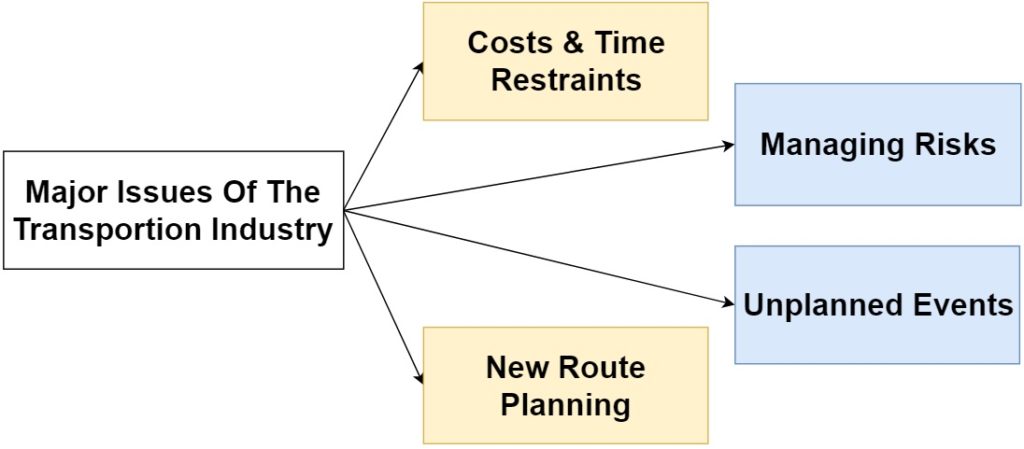Transportation within a supply chain infrastructure is a complex, costly and challenging resource to manage. In fact, research has shown that this area costs some corporations millions of Euros in net losses per year. Such heavy losses are generally a result of factors such as new route planning inaccuracies, managing specific risks, costs or time restraints, facing delays, or even reacting to a particular (unplanned) event (see Figure 1). In light of this, this project aimed to research the causes, effects and possible solutions to the problems faced within this area. Also, based on this research, a decision support system

(DSS) – embedded in a real-time web interface — was developed. The primary focus of this DSS was to provide the user with route options for transporting a particular item. More specifically, this route planning was done based on the resources available at the time of the request, and other restrictions, such as the mode of transport, or the time window available.

For this objective to materialise, existing and publicly available studies and datasets on this area were analysed. Furthermore, based on the interpreted data, qualitative semi-structured interviews were conducted with domain experts on transportation logistics. This combination of information collection techniques provided an extensive and detailed understanding of the transportation logistics industry. After the required information was gathered on this industry, the decision support system’s (and supporting components’ (see Figure 2)) specification, design and implementation were undertaken.
The evaluation results and feedback received on the DSS were positive. This was due to its capability to calculate and compare various routing possibilities in seconds, thus providing the best routing options available at that moment. Furthermore, the DSS resulted in being useful in aiding personnel to plan more accurate routes, as well as avoiding the possibility of them missing out any particular route combination which could potentially be the best solution. Based on these results, one may conclude that this portal, primarily the DSS, may assist a supply chain in improving its overall efficiency.
Student: Andrew Borg Costanzi
Supervisor: Mr Tony Spiteri Staines
Co-supervisor: Dr Peter Albert Xuereb
Course: B.Sc. IT (Hons.) Computing and Business
